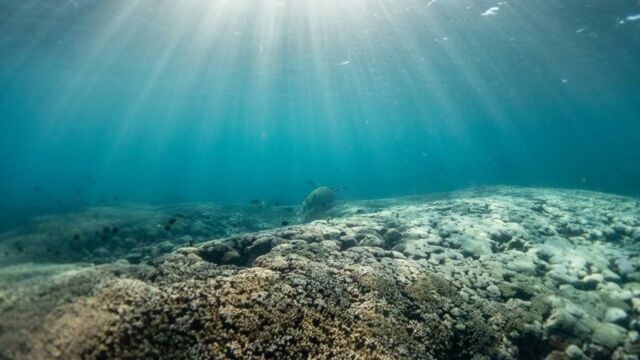Mysterious holes discovered 2,500 metres deep in the Atlantic Ocean, scientists left puzzled

During an exploration of the bottom of the Atlantic Ocean, NOAA researchers made a confusing discovery, which some Internet users are labelling as 'extraterrestrials'.
A team of researchers from NOAA Ocean Exploration - the American agency responsible for studying the ocean and atmosphere - recently made a particularly mysterious discovery in the depths of the Atlantic Ocean.
Discover our latest podcast
Mysterious holes on the bottom of the Atlantic
On 23 July, during an exploration of the Charlie-Gibbs Fracture Zone, a deformation zone of the Mid-Atlantic Ridge in the North Atlantic Ocean where depths can vary from 700 metres to about 4500 metres. According to NOAA Ocean Exploration, the scientists were surprised to observe 'several sub-linear sets of holes in the seafloor sediment'. A remarkable discovery at a depth of around 2 540 metres.
More under this adMore under this adOn Saturday's #Okeanos dive, we saw several sublinear sets of holes in the seafloor. The origin of the holes has scientists stumped. The holes look human made, but the little piles of sediment around them suggest they were excavated by...something.
— NOAA Ocean Exploration (@oceanexplorer) July 25, 2022
What's YOUR hypothesis? pic.twitter.com/iGezxV9TK8
Not having any certainty about the origin of these holes, the NOAA researchers posted images of these series of holes lined up on social networks in order to gather hypotheses - more or less serious- from Internet users. 'We received a variety of responses, ranging from aliens to an unknown species of crab, to gas rising from beneath the seabed... and more,' the researchers joked. The scientists mentioned that:
More under this adMore under this adWhile the holes look almost man-made, the small piles of sediment surrounding them suggest that they were dug
We tried, but we couldn't peek into the holes and poke them with the tools of the remote-controlled vehicle. It was also not clear whether the holes were connected below the sediment surface.More under this adMore under this ad
Man-made holes or something else?
However, this is not the first time that such a phenomenon has been observed on the seabed. In 2004, during exploration at a depth of 2,082 metres in the same area, scientists Michael Vecchione and Odd Aksel Bergstad made a similar observation, noting that these unusual holes highlight important gaps in our knowledge and understanding of mid-ocean ridge ecosystems. The most credible hypothesis to explain this phenomenon, they suggested is:
That the raised sediments may indicate excavation by a sediment-dwelling organism or digging and removal, perhaps via a feeding appendage of a large animal on the sediment surface.More under this adMore under this ad
This article is translated from Gentside FR.
Read more:
⋙ Existence of mysterious Loch Ness monster 'plausible' after archeological discovery
⋙ Mysterious time capsule opened for the first time in 200 years reveals amazing treasures
⋙ Rare phenomenon of glow-in-the-dark sea captured in first image